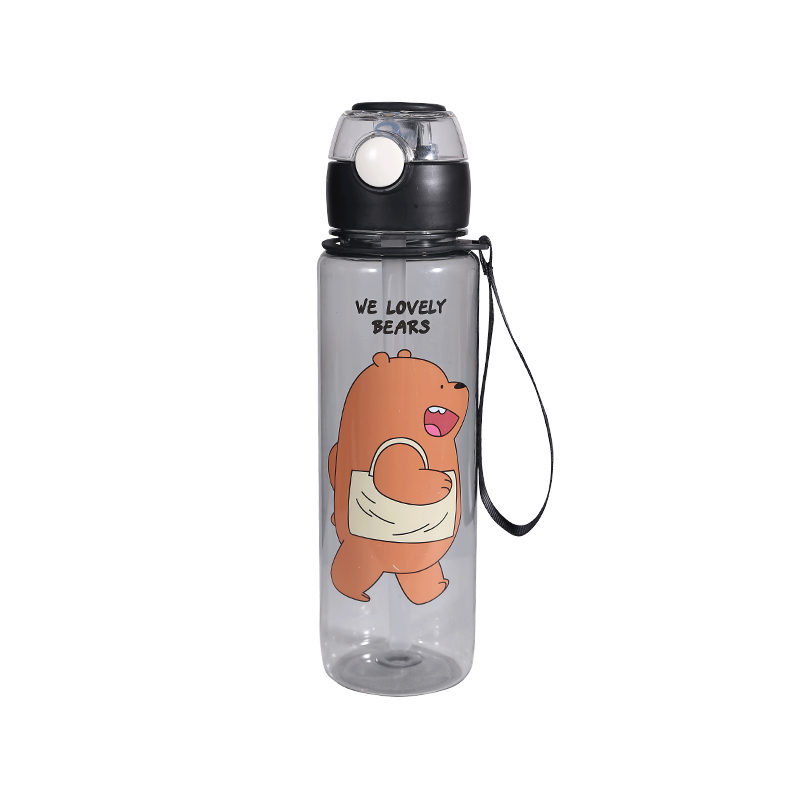A plastic sports water bottle is often subjected to rough handling—falling out of backpacks, getting knocked off gym benches, or being dropped during outdoor activities. Therefore, its ability to withstand accidental drops without cracking or deforming is a key consideration for users who value durability and convenience. This article examines the drop resistance of plastic sports bottles, the materials involved, and the factors that influence their long-term structural integrity.

Material Types and Impact Resistance
Plastic sports water bottles are commonly made from materials such as Tritan™, polypropylene (PP), high-density polyethylene (HDPE), or polyethylene terephthalate (PET). Among these, Tritan is known for its good durability and shatter resistance, making it one of the top choices for active use. HDPE and PP also offer flexibility and impact resistance, though they may scratch more easily over time.
In contrast, PET—used in many single-use bottles—tends to be more rigid and less impact-resistant. While PET bottles may look clear and lightweight, they are more prone to cracking or splitting when dropped on hard surfaces. For reusable sports applications, most manufacturers avoid PET in favor of more robust alternatives.
Structural Design Enhancements
In addition to material selection, design features play an important role in improving a bottle’s shock absorption. Bottles with thicker walls or slightly curved, reinforced shapes are better able to distribute the force of impact when dropped. Some models also include rubberized grips or silicone sleeves that help cushion falls and protect the bottle’s vulnerable areas, such as the base and lid threads.
The cap area is especially prone to damage since it often takes the brunt of the impact. High-quality bottles reinforce this area by using stronger threads, thickened necks, or even detachable lids that can be replaced separately if damaged.
Real-World Drop Performance
In real-world conditions, plastic sports water bottles are regularly dropped from heights of 1 to 1.5 meters, typical of being knocked off a desk or slipping from a hand. Durable bottles made with premium materials like Tritan often survive such falls without any structural issues, maintaining their shape and leak resistance. Lesser-quality bottles may show signs of damage, such as dents, cracks, or deformed lids, after repeated drops.
Some users intentionally perform “drop tests” to evaluate performance, dropping full bottles onto concrete or tiled surfaces. Reactions vary depending on bottle quality, but results consistently show that well-engineered bottles can withstand impacts without damage. Brands that focus on outdoor and athletic markets tend to design specifically with such challenges in mind.
Deformation Versus Fracture
While some plastic bottles may not crack upon impact, they may still warp or dent, especially if made from softer plastic. Although not as serious as a full fracture, deformation can compromise the bottle’s sealing ability or cause it to sit unevenly. Over time, repeated impacts may also cause micro-damage that weakens the structure.
If deformation affects the threading or gasket area, leaks may occur. That’s why bottles designed for high-impact use are often tested to ensure that their form and function remain intact after multiple drops.
Conclusion
A plastic sports water bottle’s resistance to breaking or deforming largely depends on the materials used and the quality of its construction. High-grade materials like Tritan or reinforced polypropylene provide good shock resistance, especially when combined with smart design features such as thickened walls and protective elements. Although no bottle is entirely immune to wear and tear, choosing a model designed with durability in mind ensures greater longevity and peace of mind during active daily use.

 English
English 中文简体
中文简体 Español
Español